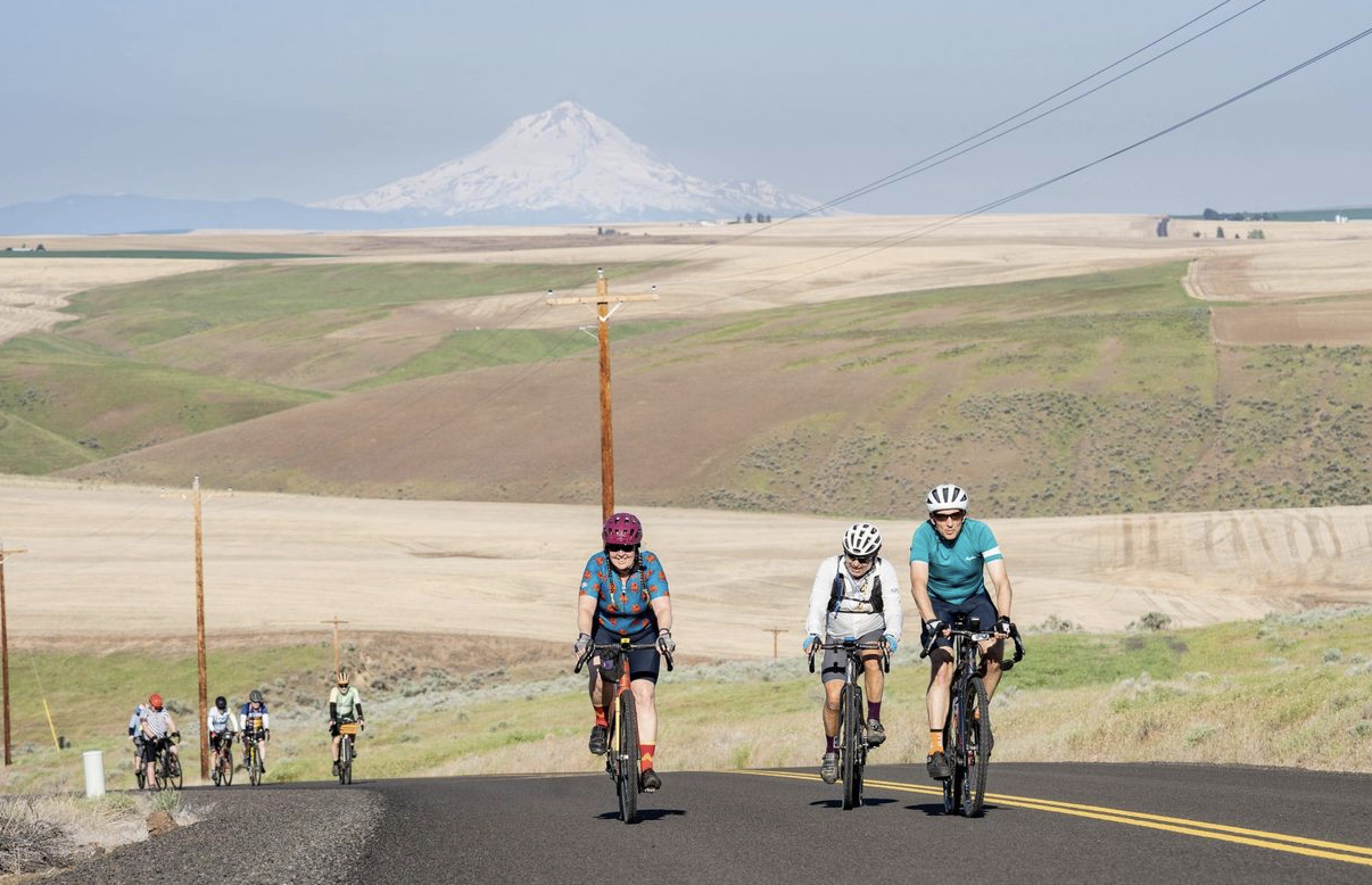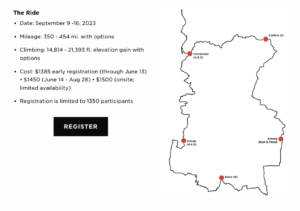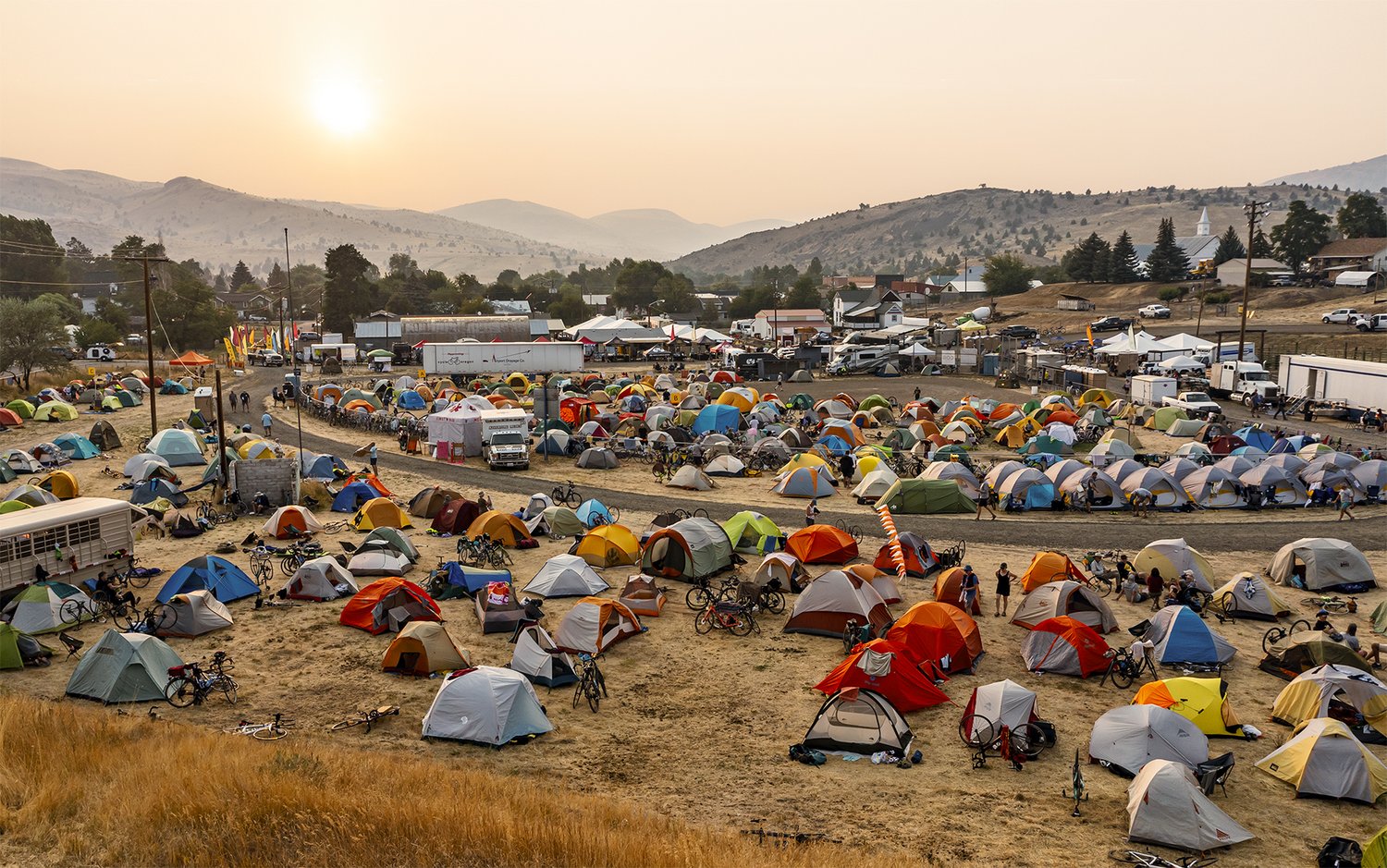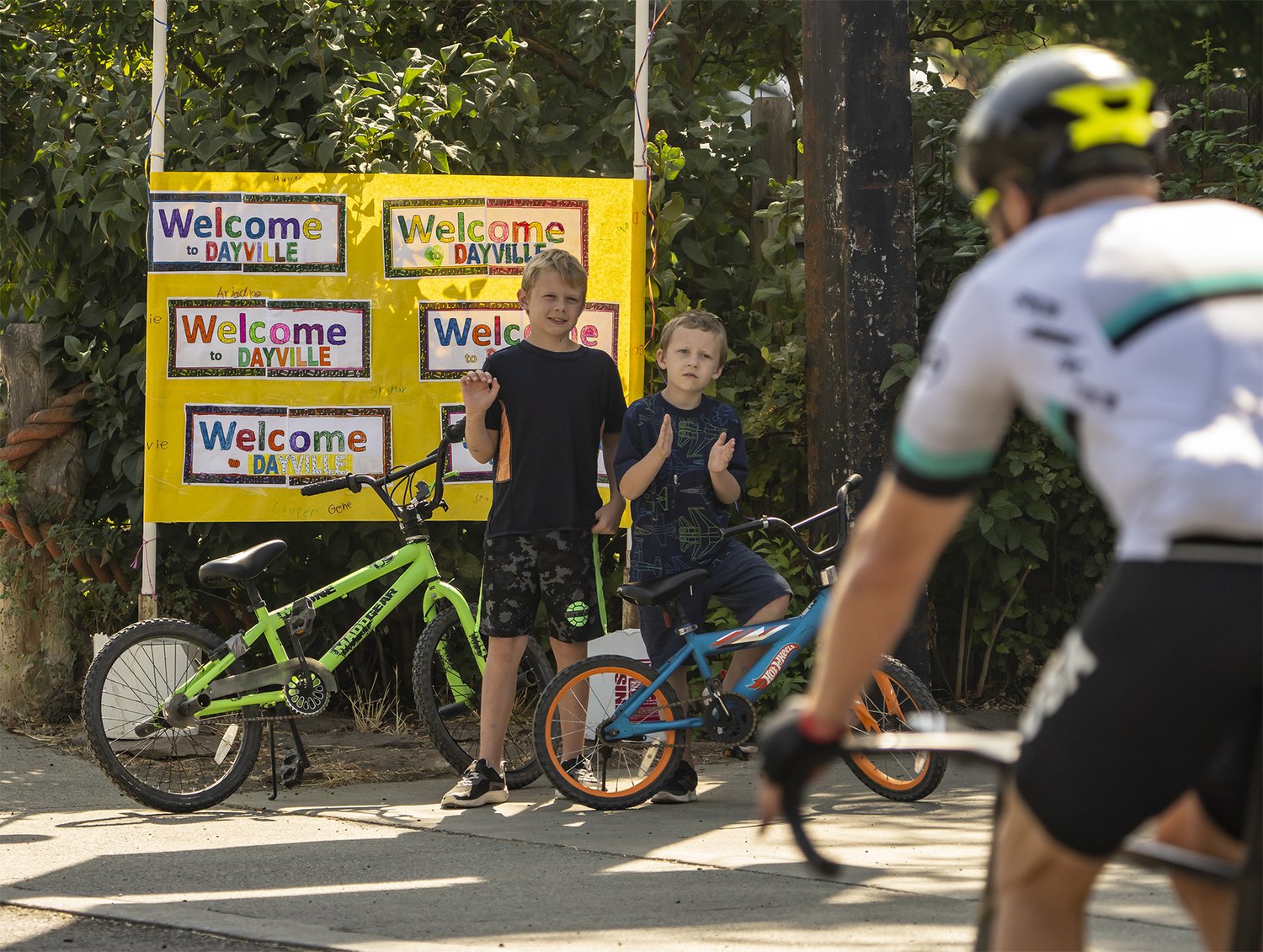
By DANA TIMS/YachatsNews
Toledo and Newport will host two of the final three legs of an iconic recreational event that has drawn thousands of cyclists from all over the world for more than three decades.
The 33rd and final edition of Cycle Oregon kicks off Sept. 9 with a tour through western Oregon’s wine country. Before it ends seven days later in Albany, riders will spend two days enjoying the central Oregon coast with a two-day layover in Toledo.
Day trips along back roads into Newport on either or both of those days guarantee that what will be the last edition of the week-long “Classic” Cycle Oregon will be dominated by coastal views and a vibrant local arts scene.

“We have traversed this state for 35 years,” said Ryan Barrett, Cycle Oregon’s marketing manager. “It’s hard to pick a favorite in a state like Oregon, but for us, the coast is certainly one of them.”
Barrett stressed that Cycle Oregon, while discontinuing its Classic offering, is not going anywhere.
Competition from other events, rising costs and related factors are requiring organizers to shift their focus to other aspects of cycling. Those include supporting development of the state’s Scenic Bikeway program, working with the Oregon Department of Transportation to improve and expand its Safe Routes to Schools program and school bike-safety offerings.
Cycle Oregon’s fleet of bikes to help children learn safe cycling practices, for instance, has now reached 170 and is deployed regularly to schools around the state.
The organization also distributes an average of $125,000 annually in the form of grants to applicants statewide, Barrett said. One grant, allotted some years ago, helped place bicycle racks at key locations around Yachats.
Community grants are expected to continue into the foreseeable future.
“We remain very much committed to Oregon and to cycling,” Barrett said. “And we are going to continue to do events.”

One final ‘Classic’
For now, cyclists are signing up at a steady clip to take part in a week-long event that has been interrupted only three times since its inaugural staging in 1988. Those hiccups involved wildfires that clouded the air in 2017 and Covid-related shutdowns in both 2020 and 2021.
This year’s limit of 1,350 riders hasn’t been filled yet, Barrett said, but registration numbers jumped after organizers announced that this year’s Classic ride would be its last.
“That really lit a fire under some folks,” he said. “It’s like your favorite bowling alley or your favorite restaurant. You have to support the things you love for them to last.”
The precise route for this year’s ride was finalized in December, said Ann Marie Redente, Cycle Oregon’s events director. It will cover anywhere from 350 to 454 miles, depending on which options riders choose, and include a total elevation gain of anywhere from 14,814 to 21,393 feet.
The decision to include the coast was bolstered in May by the 450 cyclists who showed up in Toledo for a two-day, sold-out gravel ride that explored off-road areas.
“The community was so warm and welcoming,” she said. “Toledo is just a very cool town and a great spot to enjoy cycling and so much else.”
The concept of a two layover days – riders will also spend two days lounging at Cloverdale this year — was introduced at last year’s Classic ride, Redente said. Participants voiced overwhelming support at the chance to stay in a particular spot for more than just one night.
This year, that means they’ll have the opportunity to climb back on their bikes for a breezy, 10-mile ride into Newport along Yaquina Bay Road on Sept. 14-15 before setting off for a final overnight in Alsea and one last 70-mile leg to the finish line in Albany on Sept. 16.

Logistical challenges
When Cycle Oregon comes to any particular town, it brings its own small city with it.
“We often double the population of the venues we visit,” Barrett said. “There often just aren’t enough available services in those areas, which is why we have to bring those services with us.”
Those include enough food to provide dinners and breakfasts to all participants, hot showers at the end of a long day in the saddle, massage tents, potable water, medical services and enough fuel to keep the dozens of rented vehicles the operation needs to keep going.
An army of about 100 long-time Cycle Oregon volunteers travels the entire route and helps with provisions and related services at each stop. They are joined by an additional 50 people who are employed by food, beverage and related vendors.
“Anything you could need or want on the ride is what we aim to provide,” Redente said. “That’s what makes Cycle Oregon what it is and it’s not something we want to give up.”
However, the same problem bedeviling all stripe of businesses these days – soaring costs fueled by inflation – is behind the organization’s decision to end its week-long Classic ride. Rising vendors’ fees, in particular, are climbing beyond what ride administrators have deemed to be sustainable.
Changing tastes among riders is also driving the need for change, Barrett said.
“What we are seeing is increased participation at weekend events and gradually decreasing numbers in our seven-day event,” he said. “That’s what our numbers are showing and it’s getting harder and harder to make that work.”
Still, both Barrett and Redente said they will not be at all surprised if this year’s Classic ride doesn’t sell out by the time riders leave Albany for wine country Sept. 9.
The cost of registration is $1,385 through June 13; $1,450 June 14 through Aug. 28; and $1,500 onsite (with limited availability).
“We are an organization that is very much focused on the future,” Barrett said. “We are very proud of the work and direction in which we are headed, and we are confident that countless cyclists feel the same way.”
- Dana Tims is an Oregon freelance writer who contributes regularly to YachatsNews.com. He can be reached at DanaTims24@gmail.com


